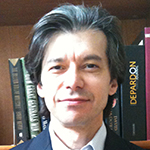An odd and little-known feature of nerve cells may be linked to several forms of inherited intellectual disability, researchers at Washington University School of Medicine in St. Louis have learned.
The scientists report that a genetic mutation that causes intellectual disability also blocks formation of the neuronal primary cilium, a hair-like structure that protrudes from the bodies of nerve cells.
“The primary cilium acts as a kind of antenna for nerve cells,” said first author Yoshiho Ikeuchi, PhD, a staff scientist. “It’s covered in receptors that monitor environmental conditions outside the cell and may influence the cell’s functions.”
Learning more about how the mutation sabotages production of the nerve cell cilium eventually will help scientists develop drugs to treat intellectual disability, according to senior author Azad Bonni, MD, PhD, the Edison Professor and chairman of the Department of Anatomy and Neurobiology.

“Intellectual disability — sometimes known as mental retardation — affects 1 to 2 percent of the general population, and researchers have identified more than 100 genes on the X chromosome that can cause these conditions,” Bonni said. “But we don’t know what most of these genes do, and that information is essential for new treatments.”
The research appears online Aug. 29 in Cell Reports.
Nearly every cell in the mammalian body has a primary cilium — a structure that acts as an environmental sensor. Some cells have many cilia that move together in waves. Problems with cilia are associated with disorders throughout the body, including illnesses of the kidneys, eyes and reproductive organs.
“Some of the X-linked intellectual disorders are syndromes that not only hamper brain development but also cause problems elsewhere in the body,” Bonni said. “That makes sense in the context of this new connection we’ve identified between intellectual disability and the primary cilium.”
Scientists only recently have recognized the potential of a primary cilium malfunction to impair nerve cell development and function. Studies have suggested that the primary cilium may be where nerve cells receive the growth signals that allow them to extend branches to each other and form circuits. Other research has shown that blocking of signal receptors on the primary cilium leads to memory problems in mice.
Bonni’s path to the primary cilium led through the nucleus, the command center that contains a cell’s DNA. Proteins found inside a cell’s nucleus often regulate the turning on or off of other genes, making them influential in orchestrating the responses and functions of cells.
Bonni and his colleagues scanned the literature on X chromosome genes linked to intellectual disability to learn which genes produce proteins found in the nucleus. When they disabled 15 such genes in individual nerve cells, they found that the loss of the gene for polyglutamine-binding protein 1 (PQBP1) produced the most dramatic effect, leaving nerve cells with shortened primary cilia or no cilia at all.
In other cell types outside the brain, PQBP1 is typically found only in the nucleus. But the new results show that in neurons the protein is present both in the nucleus and, surprisingly, at the base of the primary cilium.
The scientists learned PQBP1 binds to another protein outside the nucleus that suppresses growth of the primary cilium. By binding to the suppressor, PQBP1 gets that suppressor out of the way, allowing cilium formation to proceed normally.
Scientists may one day try to imitate this effect with drugs, potentially allowing the brain to develop more normally when PQBP1 is mutated. For now, the researchers want to learn more about the suppressor protein and also are investigating the possibility that PQBP1 may continue to influence the functions of the primary cilium after it is formed.
This research was supported by funding from the National Institutes of Health grant NS051255 (A.B.), the National Science Foundation and the Albert J. Ryan Foundation (L.d.l.T.), the Japan Society for the Promotion of Science (Y.I.), the Human Frontier Science Program (Y.I.), the Strategic Research Program for Brain Sciences (H.O.), and a Grant-in-Aid for Scientific Research on Innovative Areas (Synapse Pathology) from the Ministry of Education, Culture, Sports, Science and Technology (MEXT) of Japan (H.O.).
Cell Reports, published online on Aug. 29, 2013.
Washington University School of Medicine’s 2,100 employed and volunteer faculty physicians also are the medical staff of Barnes-Jewish and St. Louis Children’s hospitals. The School of Medicine is one of the leading medical research, teaching and patient care institutions in the nation, currently ranked sixth in the nation by U.S. News & World Report. Through its affiliations with Barnes-Jewish and St. Louis Children’s hospitals, the School of Medicine is linked to BJC HealthCare.